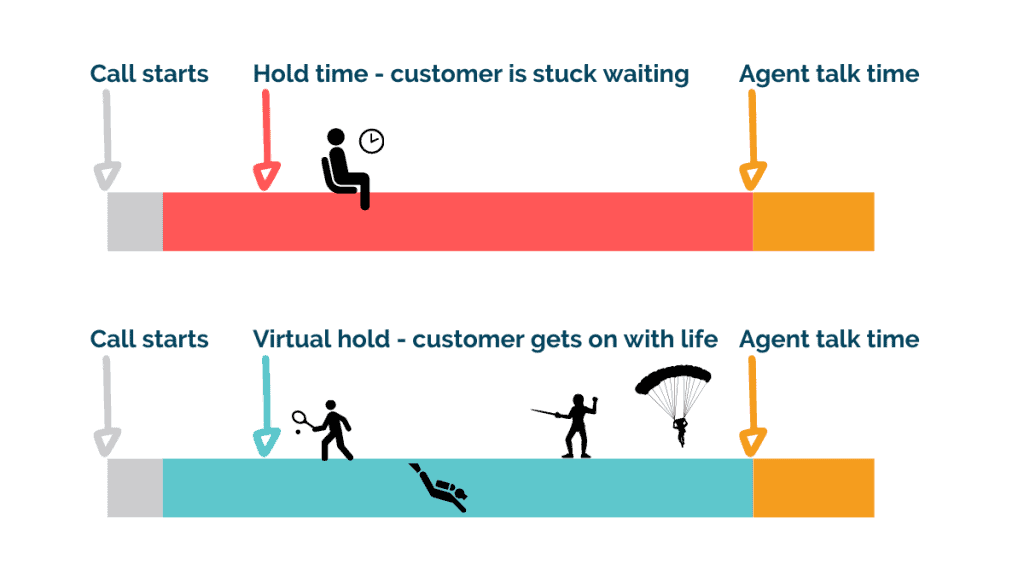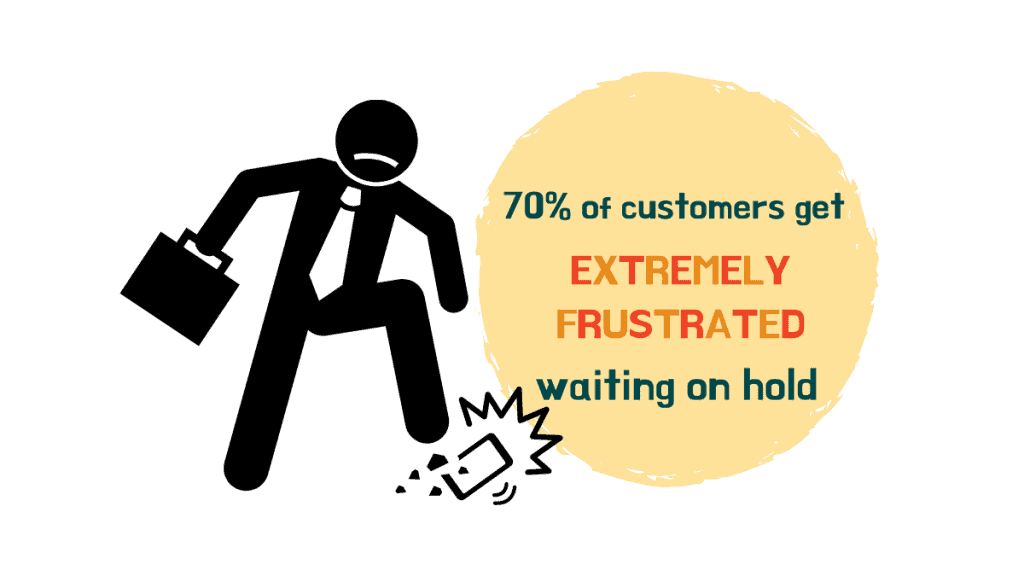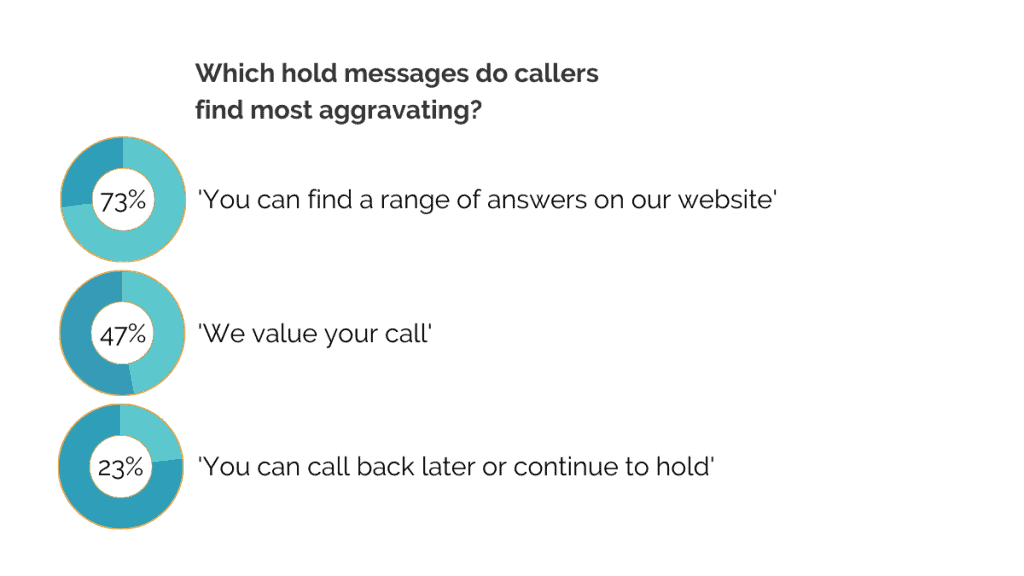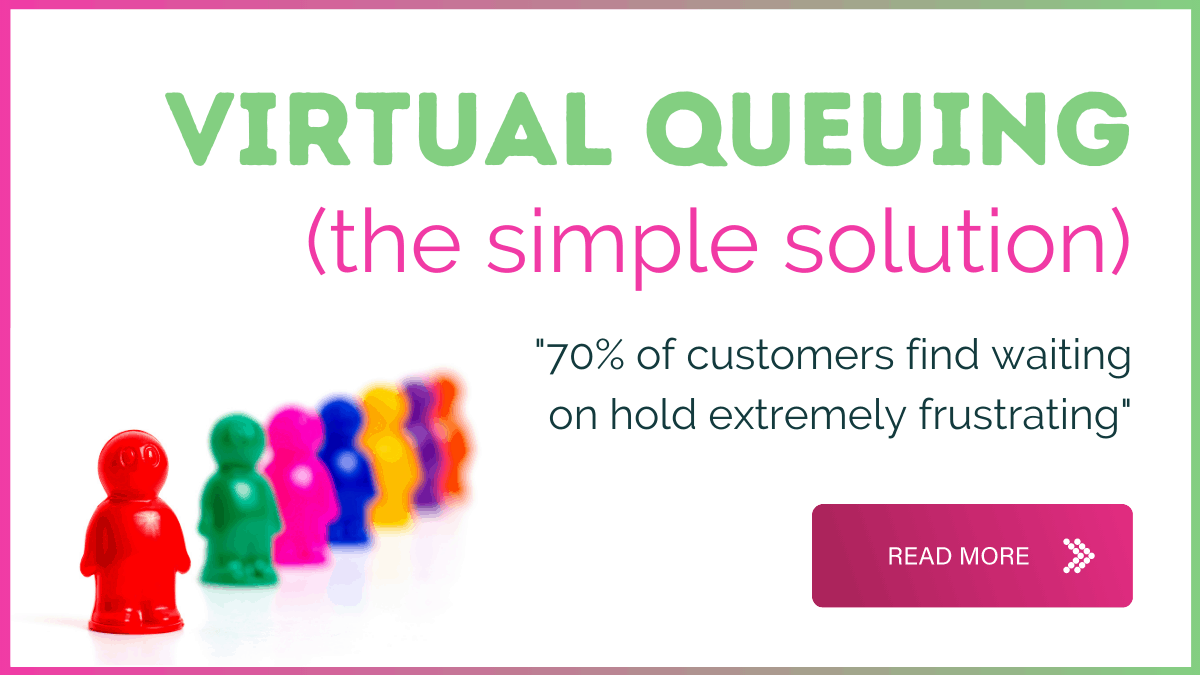Customers hate waiting on the phone to speak to an agent. Everyone knows this.
The question, then, is why do so many of us keep making customers hold? Especially when the solution – virtual queuing – is highly effective and readily available.
We don’t know the answer to this. But we do know that implementing a virtual queuing system at your contact center is a win-win situation for all involved: including customers, agents, and contact center managers.
In this post:
- What is virtual queuing?
- How does virtual queuing work?
- What are the benefits of virtual queuing for contact centers?
What is virtual queuing?
Virtual queuing is when an inbound contact center allows a caller to hang up rather than making them wait on hold. The system places the customer in a queue, and an agent calls them when they are free.
Good systems also record general information about a customer’s problem. They then automate the call-back process based on predefined criteria.
This creates a simple solution to the much-despised problem of waiting on hold. It benefits all involved.
Here’s how:
- Customers love virtual queuing because they can get on with their day instead of spending time growing frustrated while sitting by the phone.
- Contact centers benefit from happier customers and the ability to schedule calls at times of lower inbound volume.
- Agents know the type of problem the customer has in advance, helping them solve it faster. And they spend less time dealing with stressed-out callers.

How does virtual queuing work?
There are several different ways contact centers can implement virtual queuing. But they all tend to follow a similar process.
Here are four typical steps:
- A customer calls your contact center.
- They are put through to your IVR when no agents are available.
- They are placed in a virtual queue. The system stores their phone number and the reasons for the call.
- When the customer reaches the front of the queue, a free agent makes the call.
Different solutions put their own twist on this basic process.
Callbacks based on agent availability
Some only place outbound calls when call volume dips below a certain level. This ensures maximum agent availability during times when you deal with a lot of inbound calls.
This is a better solution for customers than waiting on the phone. Although, it’s still not quite ideal.
The time it takes for inbound calls to drop below the predefined level could be five minutes, or it could be fifty minutes. People have busy schedules, and this ambiguity means they may not be able to take a call when you contact them.
Callbacks based on time slots
Another solution is to provide customers with a time-slot for their call. Scheduling means customers can ensure they are free when you contact them.
But this method can be problematic for contact centers.
What if there is a sudden high volume of inbound calls at the agreed-upon time?
Agents will either be too busy with the appointment to answer incoming calls or too busy with incoming calls to make the callback.
This is especially frustrating if the contact center was less busy earlier in the day – agents could have spent this time making outbound calls.


The best choice is a virtual queuing solution tailored to your needs
The best solution is to use No-Code software that allows your contact center to build systems around existing processes.
You can integrate the technology with your CRM, IVR, and auto dialer to create predefined automations that reschedule calls in a way that suits your business and your customers.
This type of solution is favorable because:
- It provides flexibility in how you organize callbacks. Use agent availability, call-volume, or scheduled blocks.
- Integrating the system with your existing tools means agents don’t have to learn how to use new tech.
- The system works with your contact center CRM, so customer support reps go into each call with the information required to provide a satisfactory solution.
What are the benefits of virtual queuing for contact centers?
Virtual queuing has many benefits, including:
Happier customers
The whole point of a customer service team is to provide excellent customer experiences.
This is difficult when extended waiting times upset customers long before they speak to an agent. Even if you provide a world-beating service when the customer gets through, the bad taste remains.
Virtual queuing flips this on its head. It removes waiting on hold, a process that 70% of customers find extremely frustrating, and replaces it with arranging a callback. This is an idea that 75% of customers find highly appealing.
Customers appreciate the time saving, and your team can build on this already positive experience by providing a great service.
Better call efficiency
Virtual queuing helps agents work more efficiently. Instead of only working when they receive inbound calls (which can result in spikes and lulls) the right virtual queuing setup allows agents to make outbound calls when they aren’t busy.
By spreading their calls more evenly throughout the day, agents can serve more customers in the same amount of time. They will be less stressed while doing so.
More productive calls
Advanced virtual queuing systems collect information from customers when they schedule the callback.
Integrating this with your contact center CRM provides agents with an in-depth view of customer’s issues before they initiate contact.
Agents no longer spend time on the call defining problems and then passing the customer between different departments looking for a solution. Instead, the right agent makes the call with the problem and even a potential solution already in mind.
This has significant benefits for both customers and contact centers.
Customers get a fast solution to their problem, which is usually all they want. Meanwhile, your team can help more customers as they spend less time on each issue.

Lower call abandonment rate
Call abandonment rate is linked to customer satisfaction. If yours is high – the average is around 5% – it suggests that customers aren’t enjoying their interactions with your business.
It can also put a strain on your system, as frustrated customers repeatedly contact your center trying to get through to an agent.
How does virtual queuing help?
We mentioned that customers hate waiting, so it’s no surprise that long hold times cause people to hang up.
Providing customers with a call-back option reduces waiting, which can, in turn, cut your abandonment rate significantly.
But you need to implement the right solution
These are four significant benefits. But you only get them if you implement the right virtual queuing solution.
You need one that works alongside the technology you currently use and that your agents are comfortable with: one that automates queuing and callback based on the metrics that matter to your business.
Once this is set up, you’ll have a process that both your customers and agents love to use.





